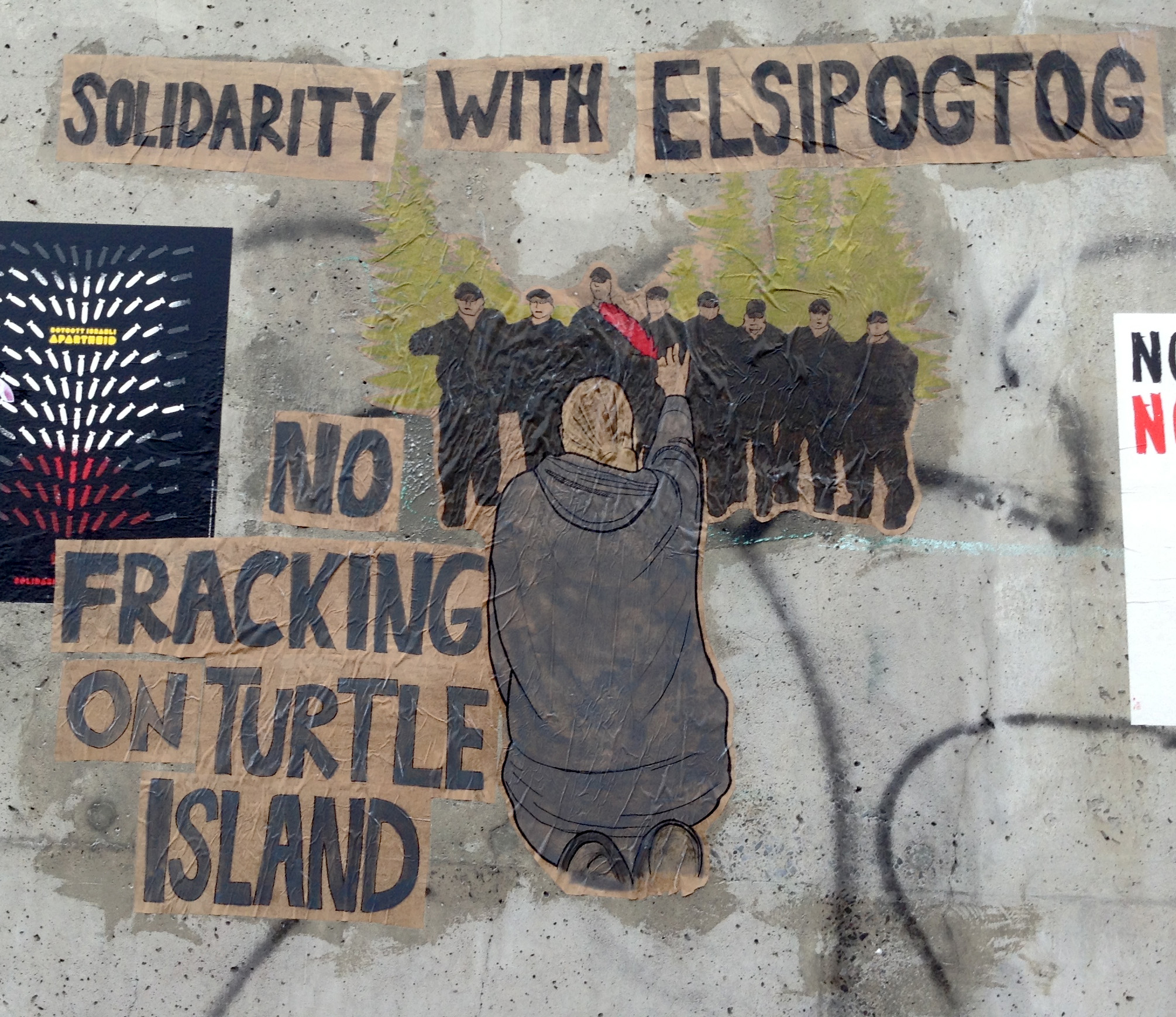On Oct. 16, the Harper government revealed its agenda for the new Parliamentary session through the Throne Speech. In addition to the paternalistic tone throughout the speech, it also spewed the usual vague promises aimed at First Nations, like promises to work towards building better relationships.

A day later, Elsipogtog happened. For weeks, an anti-hydraulic fracturing encampment was set up outside of a facility owned by SWN Resources in Rexton, New Brunswick. The Mi’kmaqs of the nearby Elsipogtog First Nation were peacefully protesting SWN, which had been conducting seismic testing, a precursor to fracking, a controversial process of extracting natural gas from shale deposits that can lead to land and groundwater contamination.
On the morning of Oct. 17, hundreds of heavily armed RCMP officers raided the group’s encampment and road blockade to enforce an injunction. The RCMP’s actions were overkill to say the least. They arrived dressed in camouflage and assumed sniper positions in the forest surrounding the protesters; protesters that included women, children, and elders.
Beanbag rounds were fired, pepper spray was used, officers had police dogs, and more than 40 demonstrators were arrested, including a band councillor.
Ignorant Canadians and certain mainstream media only focused on the arrests, alleged violent protesters, the images of the burned police cars, and a small group of protesters’ questionable behaviour towards two news agencies’ crews.
As a First Nations person, I tend to wonder why many of our stories and struggles are largely ignored by Canada’s mainstream media. That is, unless violence is involved. In the instance of Elsipogtog, only after the RCMP’s military-style raid did violence surface.
The overabundance of racist articles that present distorted accounts of the situation also paint the people of Elsipogtog as terrorists and capture mainstream attitudes towards Aboriginal people in Canada.
Recent examples of this can be seen by the intolerant and paternalistic writings of Rex Murphy at the National Post and Anthony Furey at Sun Media. Their use of images to accompany their articles emphasize the stereotype of violent First Nations people. The images featured with Murphy and Furey’s articles are of the burning/burned police cars, an image that is used throughout many news articles regarding Elsipogtog.
However, the photograph of Mi’kmaq mother Amanda Polchies, kneeling in front of a line of riot police, a photograph that certainly paints a very different story of what was happening in Elsipogtog, accompanies very few articles.
Nonetheless, the sensationalized response from the media is not a surprise. Since 1990, certain Canadian media corporations have regularly stereotyped protest actions by First Nations within a framework based upon the Oka Crisis. That is, the portrayal and perpetuation of damaging stereotypes, such as that First Nations people are violent and savage.
In their 2011 book, Seeing Red: A History of Natives in Canadian Newspapers, authors Mark Cronlund Anderson and Carmen L. Robertson argue that when it comes to news coverage about Aboriginal people, Canadian English-language newspapers have turned all of Canada’s distinct Aboriginal nations into “one heavily stereotyped monolith” rooted in colonial ideology.
Perpetuating the stereotype of First Nations inciting violence and terrorism does not do any justice to the complexity of the issues surrounding these “protests.” I use quotations because is it really protesting?
While people like Furey believe otherwise, the Mi’kmaq never ceded their traditional territory. The Mi’kmaq people were exercising their right to protect their land in light of a legitimate concern about the environmental harm caused by fracking.
The bottom line is that what happened to the people of Elsipogtog could have been prevented if the government fulfilled their obligation to consult First Nations and took their promises of forging better working relationships seriously. However, actions certainly speak louder than words. It is clear that the government has put First Nations issues on the back burner, something exactly opposite from what Harper preached in January during the height of the Idle No More movement.
Jessica Deer is a proud Mohawk from Kahnawake and is currently working towards her Graduate Diploma in business administration at JMSB.




